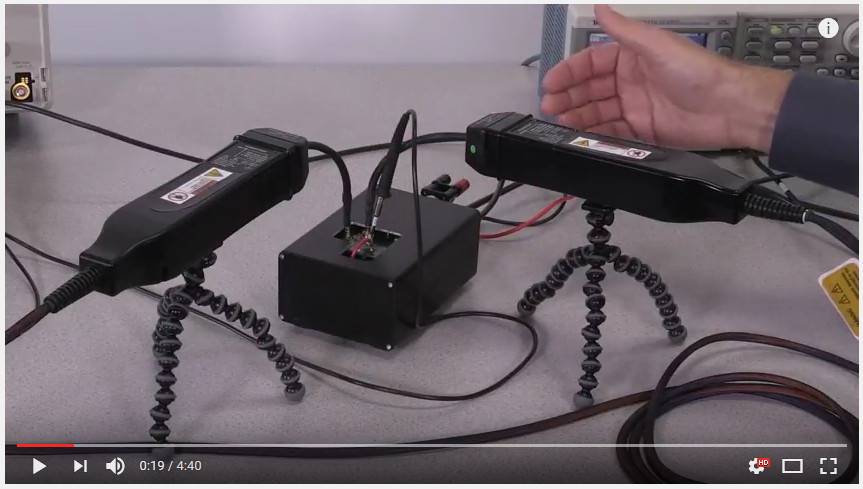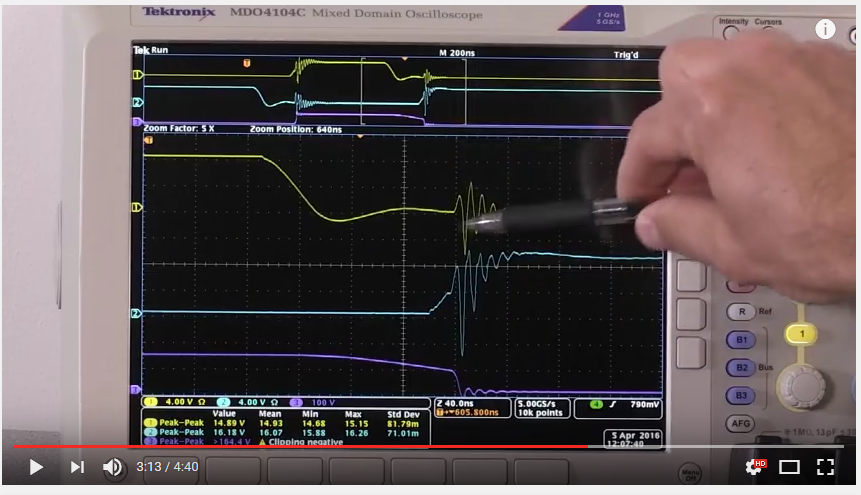

In a recently released video on the Tektronix YouTube channel, Tektronix Design Engineer Rich Booman uses the new IsoVu Measurement System shown below to make a measurement that was previously impossible. The measurement in question is high-side and low-side VGS measurements on a half bridge switching circuit with eGAN FETs.

As Booman explains, these measurements are only possible with a measurement system that combines high common mode rejection ratio, high common mode voltage and sufficient bandwidth. With its innovative optical technology, IsoVu offers complete galvanic isolation between the device under test and the oscilloscope. IsoVu has a 1 million to 1 common mode rejection ratio up to 100 MHz (no derating as frequency increases), 1 GHz of bandwidth and 2,000 V common mode rating. This combination is what makes these half bridge measurements possible.
In the video, Booman is able to accurately view both the high-side VGS and the low-side VGS in the presence of a 150 V source. Without exceptional common mode rejection, the 150 V source or switch node would couple with the other signals and obscure the true differential measurements.
Why do these measurements matter?
As shown in the screen shot below, parasitic coupling is occurring from the switch node (the purple trace) in both of the gates (high-side is the yellow trace, low-side is the blue trace) which in turn is causing ringing into the high-side gate node. This is concerning because if the ringing were large enough to turn the device back on it could create a short between the power supply and the ground and could damage or destroy the device. Without IsoVu there would be no way to observe this ringing, or even to know the extent to which it is occurring and under what conditions.

After you watch the video and see the probe in action, you can do a deeper dive on these measurements by downloading and reading through the Tektronix white paper Measuring Vgs on Wide Bandgap Semiconductors and visiting the IsoVu product page.


